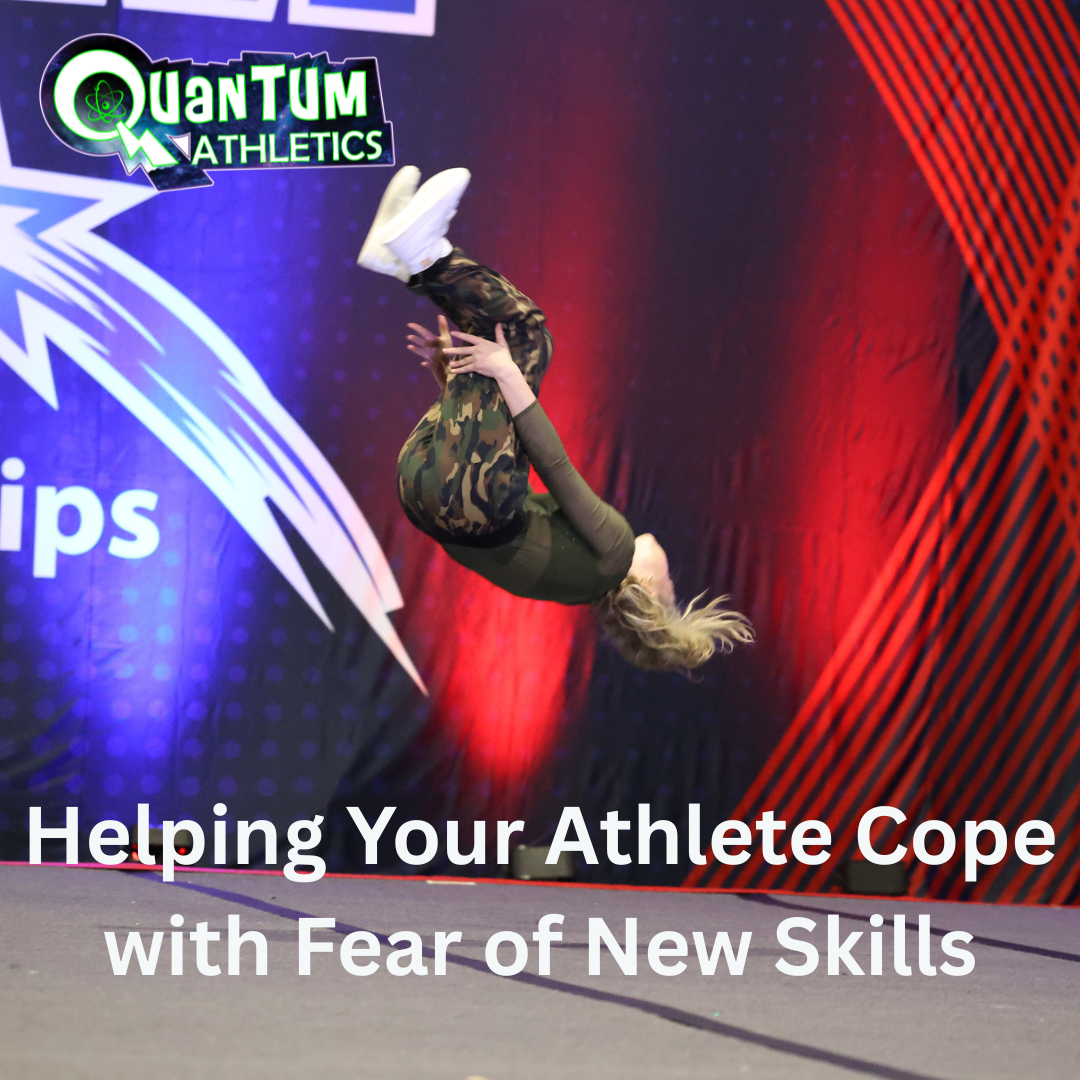Helping Your Athlete Cope with Fear of New Skills
If you’ve ever watched your child hesitate before throwing a back handspring or seen tears after a tumbling pass they used to land easily — you’re not alone.
Fear is one of the most common experiences in tumbling and cheer. It can show up suddenly, stick around longer than expected, and leave both kids and parents frustrated.
But here’s the good news: fear isn’t weakness — it’s a signal. It means your athlete’s body and brain are working together to keep them safe. And with the right support, that same fear can become a stepping stone toward growth and confidence.
🧠 1. Understand What’s Really Happening
When kids are learning new tumbling or cheer skills, their brain is trying to process a lot — momentum, balance, timing, and spatial awareness.
If something feels even slightly off (or if they’ve had a bad experience, like a fall or failed attempt), the brain triggers a “danger” response to protect them.
That’s why even experienced athletes can suddenly “lose” a skill they’ve done a hundred times before. It’s not that they forgot — it’s that their brain is saying, “Wait, let’s make sure this is safe.”
Parents can help most by staying calm and supportive, not pushing through the fear too quickly.
🧍♀️ 2. Validate Their Feelings (Don’t Brush Them Off)
Saying things like “You’re fine!” or “Just do it!” often backfires.
To an athlete in fear, those words can make them feel unheard or pressured.
Instead, try:
-
“I can see that this feels scary right now.”
-
“It’s okay to take a break and try again when you’re ready.”
-
“You’ve been brave before — you’ll get there again.”
Validation builds trust. It tells your athlete their emotions are valid — and that you believe in their ability to overcome them.
🧩 3. Break the Skill Down
At our gym, we teach that progress is progress, no matter how small.
If a skill feels overwhelming, the best approach is to break it into smaller steps.
For example:
-
Practice the round-off before the back handspring.
-
Work back on drills with a coach’s spot or soft mat.
-
Visualize the skill before trying it again physically.
Each step rebuilds confidence and retrains the body to feel safe again. Slow, structured progress beats rushing every time.
🗣️ 4. Communicate with Coaches
Your athlete’s coach has likely seen hundreds of kids work through fear — it’s part of the process.
Keep an open dialogue:
-
Ask what drills or progressions your child can do at home.
-
Check in about when to push gently versus when to pause.
-
Let the coach know how your athlete is feeling outside the gym too.
When parents and coaches work together, kids feel supported from all sides — and that emotional safety speeds up recovery and confidence.
🌱 5. Focus on Effort, Not Perfection
Progress in tumbling and cheer isn’t linear. Some days are fearless; others are full of hesitation.
The best thing parents can do is praise effort — not just the end result.
Try saying:
-
“I’m proud of how hard you worked today.”
-
“You showed courage by trying again.”
-
“You trusted your coach — that’s huge!”
When kids feel safe to fail, they learn faster and recover stronger.
💖 6. Remind Them That Fear Is Normal
Even elite cheerleaders and gymnasts experience fear before learning a new skill. What separates them from the rest is how they respond.
Help your athlete see fear as a temporary visitor, not a permanent roadblock. With patience, repetition, and support, their confidence will return — often stronger than before.
✨ Final Thought
Fear in tumbling and cheer isn’t a setback — it’s a part of growth.
Each time your athlete faces fear, they’re learning courage, resilience, and self-trust — qualities that go far beyond the mat.
At our gym, we remind athletes daily:
“Courage isn’t the absence of fear — it’s doing the skill anyway, one safe step at a time.”
If your athlete is working through fear right now, know that they’re not alone — and they’re exactly where they need to be.
With the right mix of patience, practice, and encouragement, that fear will soon turn into flight.

